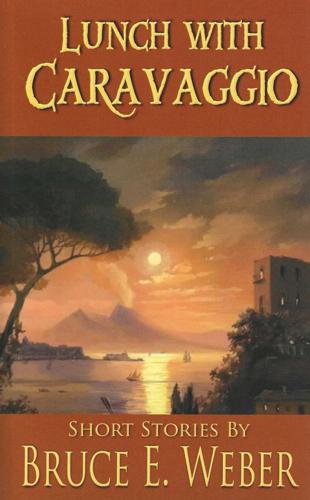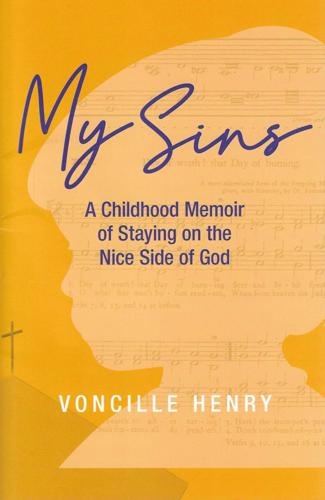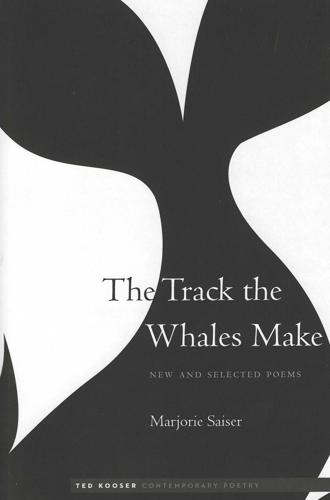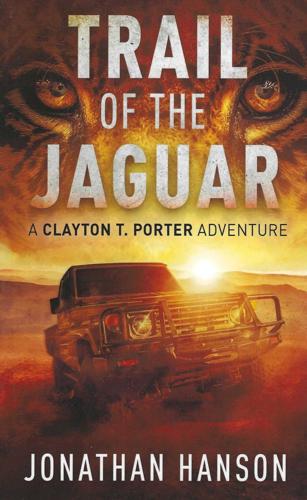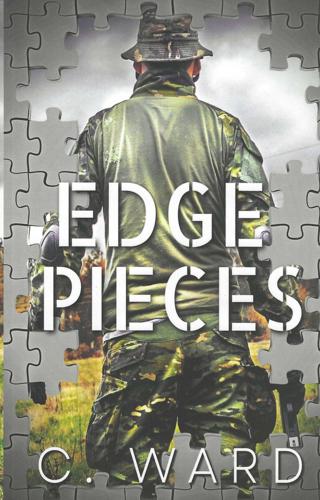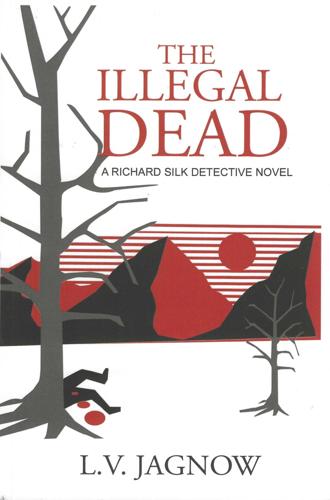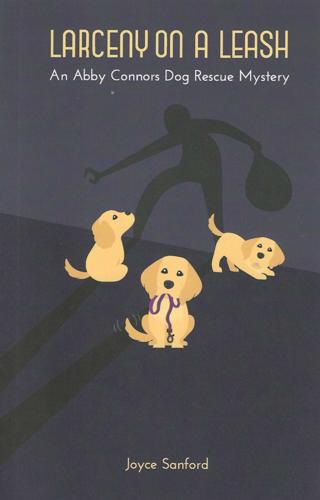“Lunch with Caravaggio” by Bruce E. Weber (Stanfield Books). 214 pages. $14.99.
The central theme of these 11 stories by Tucsonan Bruce E. Weber is that humans believe they live their lives guided by reason and logic, but it’s “the tiny lizard-brain at the base of their skulls that actually rules” their actions.
Weber catalyzes that “lizard-brain” response by setting his characters in familiar situations, and then, upending them. He provides an interesting variety of set-ups — a Boston concert pianist whose parents despair of her ever marrying; a guy in Thailand looking for a companion for his 50th birthday; a female naturalist convinced the dodo bird still exists; a married couple in a bodily-fluid-averse, future society who want a child. They’re original and entertaining. And, yes, the “primordial reptile within” rules.
— Christine Wald-Hopkins
“My Sins: A Childhood Memoir of Staying on the Nice Side of God” by Voncille Henry (A3D Impressions). 147 pp. $14.95 paperback.
Ten years old can be a great age: it’s near the top of being a kid, but not yet hormoned into adolescent drama; the 10-year-old’s aware of the world, and imagining her opportunities in it. As this fascinating memoir by retired clinical social worker Voncille Henry, it can also be an age subject to coercion and control.
In an unusual — and effective — stylistic strategy, Henry presents her memoir as diary entries of her 1950’s 10-year-old self, living in Hobbs, New Mexico. Young Vonnie was curious, feisty, and musically talented, but also in thrall to the teachings of her fundamentalist Pentecostal church. She was so in thrall, and so afraid of Hell and The Eternal Lake of Fire, in fact, that she kept a special Notebook of Sins to record anything that might qualify her for it. She had been “saved” at age five, but she worries that it “didn’t take.”
Henry’s 10-year-old self is astute and observing: She depicts Hobbs as stinking and barren. She recreates a thundering, sweating, chastising Preacher Brother Higgins as lively theater, and her close, loving family as forgiving refuge. When her garage-owning father brings home a $50 piano, Vonnie recognizes her salvation: if she can learn to play hymns like the beautiful Janie Larue (who always arranges her skirts just so, as she takes her place at the church piano), she, Vonnie, can also remain “on the nice side of God.”
— Christine Wald-Hopkins “The Track the Whales Make: New and Selected Poems” by Marjorie Saiser (University of Nebraska Press). 180 pp. $19.95.
Former US Poet Laureate Ted Kooser nails it in his introduction to this fine bone-honest collection of poems: In real poetry, an author “shows through,” Kooser writes” … Marjorie Saiser is right there in every poem, not upfront, getting in the way, but just off to the side.” The reader feels that Saiser is inviting us into her life, traceable through her work.
Arranged counter-chronologically, the “new and selected” comprises eight sections of poems written from the present back to 1999. They deal with ordinary, quotidian things, and love in its delights and disappointments. The contemporary “I Had a Marriage in Those Days,” for example, (“the marriage began to be clear/ in the way a field of corn/will tell the truth …”) is a painful corollary to the 1999 “Saying Yes on the Road” (“my husband in the front, driving, singing/ …reaching/ over his shoulder to touch my hand/ my hand reaching up to him/…as if we could give yes to what comes beyond the rise”). And there is one recurring soul-wrenching tragic specter that makes you want to reach out to her.
— Christine Wald-Hopkins “Trail of the Jaguar: A Clayton T. Porter Adventure” by Jonathon Hanson (Natural Selection Press). 387 pp. $15.99 paperback.
Sometimes you just know a writer’s having fun. Like when he cuts from the action, and winks at the reader, as Jonathon Hanson does, periodically, in this ripping cross-border action adventure featuring wildlife photographer, biologist, ex-special ops, weapon-wielding conservationist Clayton T. (don’t ask what T stands for) Porter.
“Trail of the Jaguar” opens with Porter — quietly monitoring a remote water site on the Cabeza Prieta National Wildlife Refuge — witnessing a border smuggling shooting. Hoping to save the victim, Porter unfortunately manages to alert the bad guys, and has to roar off into the first of numerous rattling, soaring, skidding, mountain-scrambling, bullet-evading, desert cross-country chases, that ends with an inspired herpetologist’s gambit.
Turns out, Porter’s stumbled on a sophisticated drug-counterfeiting and jaguar-killing franchise in Mexico. When the franchise’s goons attack Porter’s friends, he launches a one-man war on it, that takes him into northern Sonora, and then to the Sea of Cortez. Calculated chaos ensues.
Hanson, who’s written for numerous outdoor and adventure magazines, plus a dozen books on such subjects as natural history and sea kayaking, makes convincing use of his expertise in Porter’s crazy, creative crusade.
— Christine Wald-Hopkins “Edge Pieces” by C. Ward. Independently Published. 194 pp. $8.99, $4.99 Kindle.
When he was young, Alex’s father advised him to picture the life he wanted then work to achieve it. But Alex’s life has been more puzzle than picture, incomplete and fragmented, with pieces that don’t fit or are missing. His life feels like a series of arbitrary events, beginning with his first tour of duty in the Middle East: “I was a kid, doing a man’s job,” one that he didn’t comprehend.
So detached is he that, when awarded a battlefield medal, he’s at a loss to know why. The only thing that makes sense is his epistolary relationship with a young woman he connected with in a random exchange of letters. He carries her picture in his helmet. Although ephemeral, she becomes his lodestar.
This novel, written in the style of a memoir, follows Alex down the years, through a military career, struggles with PTSD, and in and out of love as he connects the pieces of his puzzling life. Maturity brings focus. As the book’s gripping finale suggests, nothing is arbitrary: Everything is connected and happens for reasons we don’t always control. Author C. Ward, who based his novel, in part, on personal experience, lives in Tucson.
— Helene Woodhams “The Giving Tree of the Desert: The Tale of a Saguaro Cactus and Its Nurse Tree” by Danielle Fradette, illustrated by Tais Lemos. Common Ground Mentoring. 38 pp. $14.95, $8.99 Kindle.
This touching picture book, reminiscent of the Shel Silverstein children’s classic, tells the story of the bond between devoted Sonoran Desert companions in a way that is as endearing as it is educational. In it, a palo verde “nurse” tree lovingly stands guard over a tiny saguaro as it begins its long journey to maturity, protecting it from insects, harsh weather, and hikers’ careless boots.
In charmingly whimsical illustrations by Tais Lemos, the saguaro grows taller and more stately through the seasons and the years, showing off a crown of flowers in the summer and developing arms, while the aging palo verde continues to unselfishly provide water, nutrients and, finally, a resting place when the saguaro, grown to many-armed splendor, is too heavy to hold itself up.
Even the youngest readers will come away with an understanding of desert interrelationships and, perhaps more importantly, an appreciation of what it means to be a true and loving friend. Tucsonan Danielle Fradette tells a story that is sure to become a read-aloud favorite for kids and their grown-ups, one that would be a great addition to any family’s desert library.
— Helene Woodhams “The Illegal Dead: A Richard Silk Detective Novel” by L.V. Jagnow. Independently Published. 259 pp. $12.
The darkest implications of vigilantism in the borderlands inform this latest offering from L.V. Jagnow, featuring Detective Richard Silk. Retired from law enforcement in the Midwest, but not from unravelling thorny crimes, Silk finds himself in the remote Sonoran Desert, investigating the violent deaths of migrant crossers, written off by local authorities as nothing more concerning than misadventure by coyote.
Believing this explanation fails the smell test, Silk suspects that a killer is on the loose. He goes undercover, mixing among the locals, and soon finds himself being recruited by the Liberation Armee, vicious, self-appointed immigration enforcers with deadly tentacles extending far beyond southern Arizona. It’s more crime than he bargained for, but Silk is driven in his pursuit of justice, playing a game of cat and mouse that jeopardizes his life.
This is the fourth outing for Detective Silk and Jagnow’s fifth book. A retired public relations specialist, Jagnow is president of the Amistad y Salud Board of Directors, which oversees a free primary healthcare clinic for the poor in Tucson.
— Helene Woodhams “Larceny on a Leash: An Abby Connors Dog Rescue Mystery” by Joyce Sanford. Outskirts Press. 237 pp. $20.95, $8.99 Kindle.
“Dogs had never failed her.” The thought reassures Abby Connors, newly rescued from a harrowing kidnapping, as the pride of the police department’s K-9 unit takes off after her abductor. Her faith is justified. As head of a golden retriever rescue group, there’s not much Abby doesn’t know about the dogs that consume her days. She’s less confident about criminals, but it seems she has a knack for dealing with them, too.
In this lively second installment of Joyce Sanford’s Dog Rescue series, two scammers are bilking retirees in one of Tucson’s tonier suburbs, and Abby finds herself in the cross-hairs of an investigation when they set her up to be the fall guy for their misdeeds.
But they picked the wrong target: Abby has a network of friends, resources, and an enviable ability for figuring out puzzles, honed by years of matching new owners with the perfect rescue dog. It’s a combination that makes her the ideal amateur sleuth. It’s not surprising that Sanford hit on this formula as the basis for an entertaining whodunit—when not writing mysteries she helms Tucson Golden Rescue — and with this delightful second outing she again demonstrates a flair for mixing crime with a behind-the-scenes look at canine care.
— Helene Woodhams


